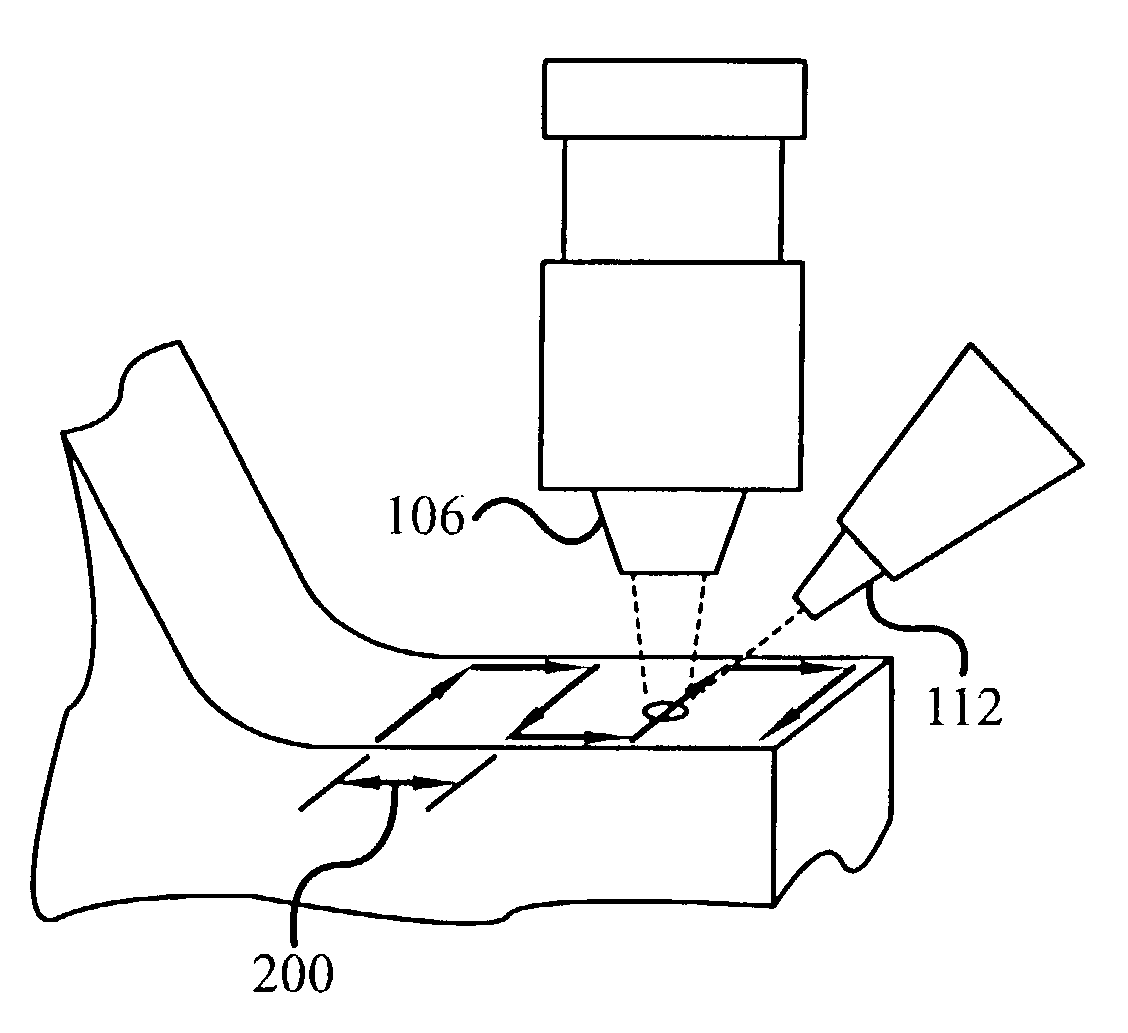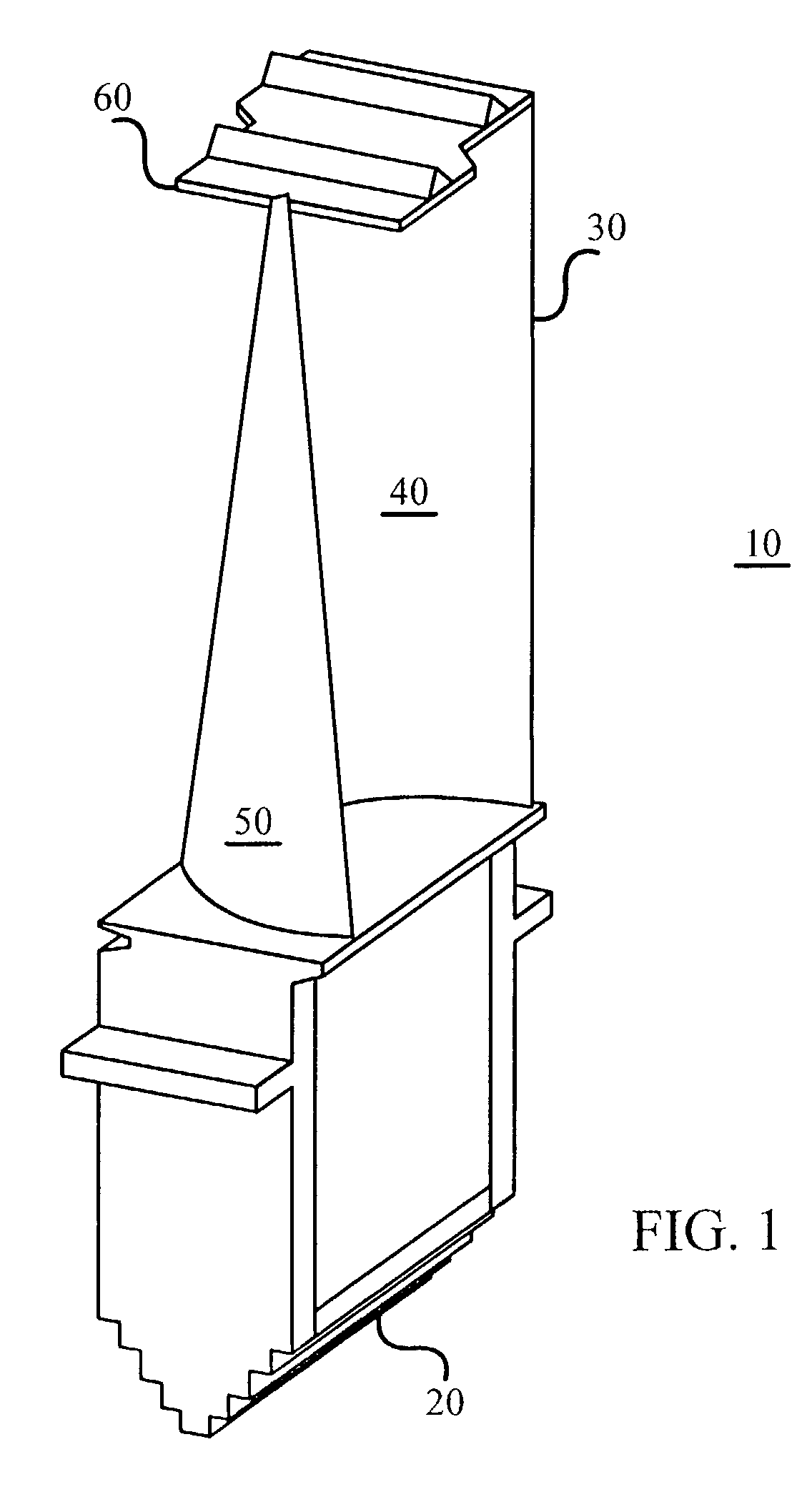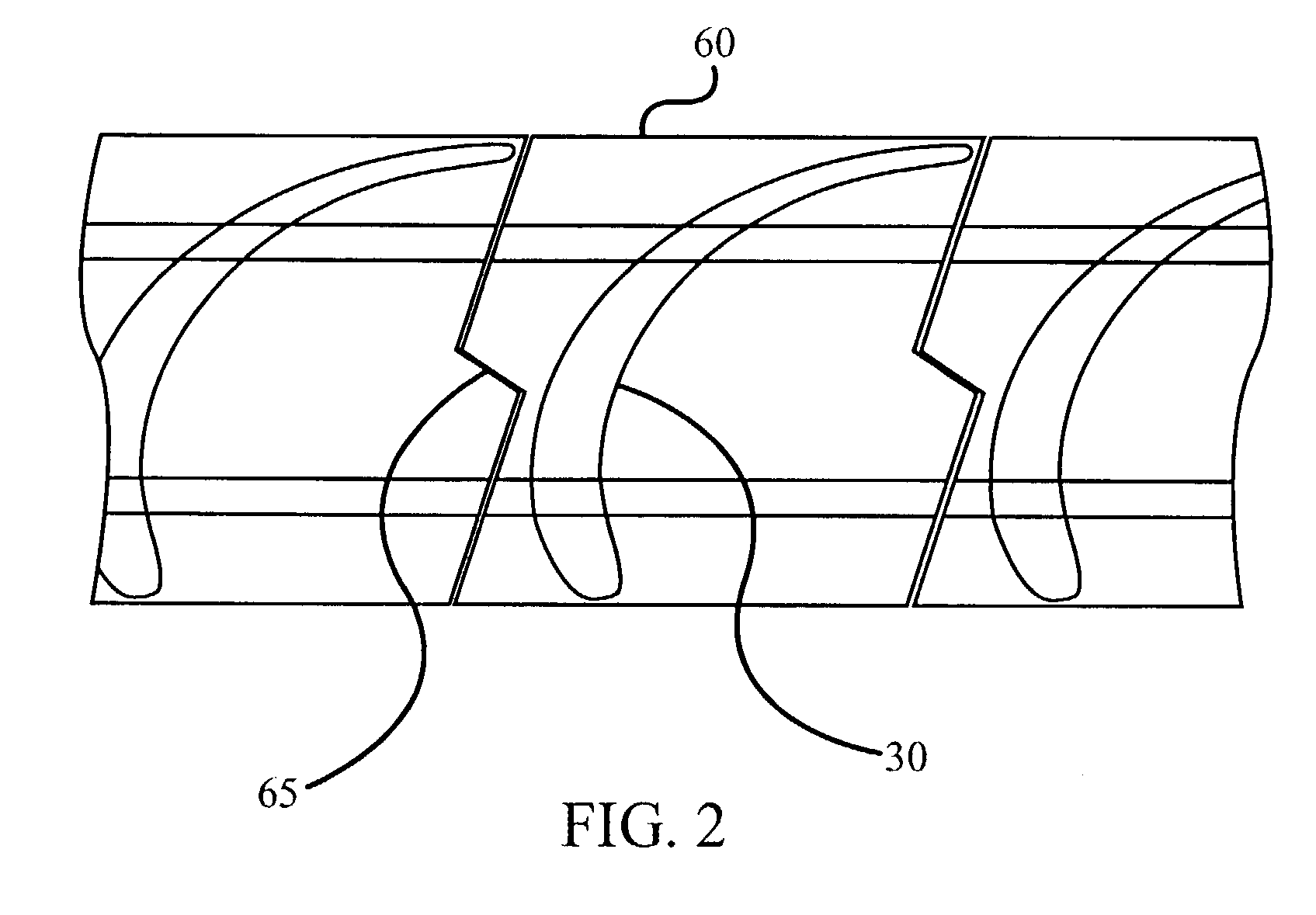Laser powder fusion repair of Z-notches with nickel based superalloy powder
a superalloy powder and fusion technology, applied in the direction of blade accessories, machines/engines, waterborne vessels, etc., can solve the problems of increasing the demands on engine components and materials, difficult to weld successfully with known welding techniques, and high cost of turbine blades, etc., to achieve cost savings
- Summary
- Abstract
- Description
- Claims
- Application Information
AI Technical Summary
Benefits of technology
Problems solved by technology
Method used
Image
Examples
example
[0048]Seven low pressure turbine blades were subjected to the repair method described herein. The blades had been taken out of service for wear in the Z-notch area. One of the seven blades was kept in its received condition for purposes of comparison. A second blade was inspected to determine whether the turbine blades had been subjected to overheating while in service. The gamma prime structure in the blade indicated that the blades had not been subjected to excessive heating, and met service requirements. The remaining five blades were cleaned with an alkaline solution. The Z-notch areas of the blades were inspected by fluorescent penetration inspection to confirm that no cracks were present prior to welding. The Z-notch area of the blades was grit blasted. The blades were then subjected to laser welding with a US LASER 408-1 YAG laser. Three layers of Inconel 713 alloy powder were deposited in three welding passes. The as-welded blades then received a heat treatment. The blades w...
PUM
| Property | Measurement | Unit |
|---|---|---|
| Time | aaaaa | aaaaa |
| Power | aaaaa | aaaaa |
| Area | aaaaa | aaaaa |
Abstract
Description
Claims
Application Information
 Login to View More
Login to View More - R&D
- Intellectual Property
- Life Sciences
- Materials
- Tech Scout
- Unparalleled Data Quality
- Higher Quality Content
- 60% Fewer Hallucinations
Browse by: Latest US Patents, China's latest patents, Technical Efficacy Thesaurus, Application Domain, Technology Topic, Popular Technical Reports.
© 2025 PatSnap. All rights reserved.Legal|Privacy policy|Modern Slavery Act Transparency Statement|Sitemap|About US| Contact US: help@patsnap.com



